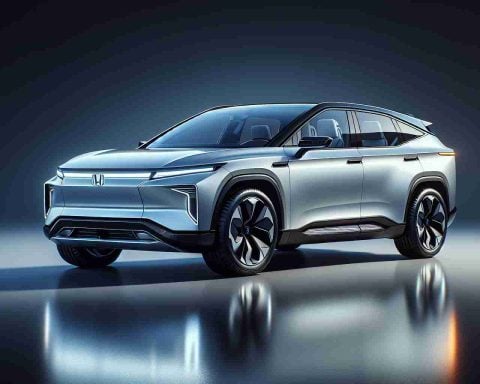- Cathie Wood of ARK Investment Management is known for identifying unexpected investment opportunities, famously including Tesla.
- Her current focus is on electric air taxis, specifically Archer Aviation, which aims to revolutionize urban mobility with battery-powered aircraft.
- Archer has attracted interest from companies like Stellantis, United Airlines, and the U.S. military, but it currently does not generate revenue.
- Comparisons to Tesla are prevalent, though Archer lacks Tesla’s diverse business lines, such as energy storage and AI tech.
- Archer trades around $10 with a $4.2 billion market cap, but investors are advised to remain cautiously optimistic as its future is still speculative.
Cathie Wood, the fearless leader of ARK Investment Management, has long stood apart from her Wall Street peers with her knack for spotting unexpected opportunities. When others scoffed, she championed Tesla, turning a bold bet into a $1 billion behemoth in her portfolio. Now, her focus shifts from roads to skies, exploring the potential of electric air taxis.
Wood has set her sights on Archer Aviation, a company aiming to transform urban transport with its battery-powered aircraft. These futuristic vehicles promise to soar above the grit and grind of city traffic, potentially revolutionizing mobility in crowded urban landscapes. Archer already boasts significant interest from industry giants like Stellantis and United Airlines, and it’s even caught the eye of the U.S. military.
Despite the buzz, Archer is still at the runway, not yet generating revenue. The parallels to Tesla are tempting, recalling a young company once viewed with skepticism before exceeding expectations. Yet unlike Tesla, Archer does not have the multi-dimensional business lines, such as energy storage and AI tech, that propel Tesla today.
Investors eyeing Archer, trading around $10 with a $4.2 billion market cap, should approach with cautious optimism. While the excitement is palpable, it’s wise to remember that promise doesn’t always equate to reality. As Archer navigates the path from innovative concept to tangible, profitable product, it remains a speculative play in the evolving narrative of aerial mobility.
Wood’s journey with Archer is still unfolding. Whether these air taxis will soar or falter in their flight for market dominance is a story yet to be written. The skies might be the limit, but until proven otherwise, Archer’s future hovers in the realm of ambitious potential.
Will Electric Air Taxis Revolutionize Urban Mobility? Get the Facts!
Market Forecasts & Industry Trends
The electric air taxi industry, led by pioneers like Archer Aviation, holds a promising forecast. According to a report by Morgan Stanley, the urban air mobility (UAM) market could reach $1.5 trillion by 2040. The push for environmentally friendly transportation solutions, coupled with advancements in battery technology, makes the prospect of air taxis increasingly viable.
Industry trends indicate a shift towards green aviation with increased investment from major players such as United Airlines and automotive manufacturer Stellantis partnering with Archer. There’s a noticeable trend toward collaborations between aviation startups and established companies, helping to expedite technological development and regulatory acceptance.
Real-World Use Cases
Electric air taxis are envisioned to significantly reduce travel time in urban centers, alleviating congestion and providing an alternative to traditional public transport. They promise on-demand, point-to-point service, similar to ride-sharing platforms but airborne. In cities with dense traffic, air taxis could cut commute times from hours to mere minutes. They are also being considered for applications in emergency medical transport and rapid cargo delivery.
Controversies & Limitations
While the potential is immense, several hurdles remain. Regulatory frameworks for UAM are still in nascent stages, and airspace management is complex. Safety concerns persist regarding battery technology in aviation and the implications of operating aircraft in heavily populated areas.
Critics also point out the noise pollution from constant air taxi operations, potential impact on urban wildlife, and the socio-economic divide as initial services might be cost-prohibitive for the general public.
Reviews & Comparisons
Archer Aviation faces direct competition from other UAM firms like Joby Aviation, EHang, and Lilium. Joby Aviation, for example, has already conducted test flights and has received Federal Aviation Administration (FAA) certification for its piloted eVTOL (electric Vertical Take-Off and Landing) aircraft. Archer’s competitors vary in aircraft design, range, speed, and capacity, which could influence their adoption in different markets.
Pricing & Features Overview
Archer has targeted a competitive price point for its services, aspiring for prices similar to ride-sharing options such as UberX. The goal is to democratize access to air travel within cities. While specific operational details are still under development, such pricing ambitions suggest a mass-market approach.
Security & Sustainability
Electric air taxis are inherently more sustainable than their traditional fossil-fuel counterparts, contributing fewer emissions and having a smaller carbon footprint. However, lifecycle assessments are essential to understand the environmental impact of battery production and recycling.
Pros & Cons Overview
Pros:
– Reduced Travel Time: Most significant benefit with potential drastic reductions in urban commute times.
– Sustainability: Cleaner than traditional air travel, aligning with global environmental goals.
– Innovative Mobility Solutions: Opens new avenues in urban planning and public transportation.
Cons:
– High Initial Costs: Predicted to be expensive at launch.
– Regulatory Challenges: Heavy dependency on evolving aviation regulations.
– Infrastructure Requirements: Needs urban air mobility infrastructure, which requires substantial investment.
Actionable Recommendations
1. Approach Investment With Caution: Like any emerging technology, the potential is mixed with considerable risk. Diversifying investments could mitigate risks.
2. Stay Informed on Regulatory Developments: As regulatory frameworks evolve, they will play a crucial role in shaping the industry’s future. Keep abreast of FAA and international aviation bodies’ decisions.
3. Engage in Local Community Discussions: Urban residents should participate in discussions about infrastructure development and potential impacts on daily life.
For further insights into electric air taxis and urban air mobility, explore these domains: Archer Aviation and Morgan Stanley.


















